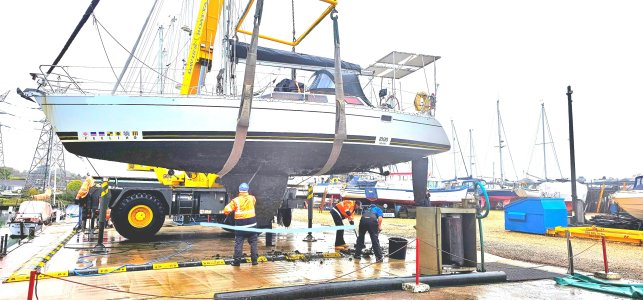ritchyp
Well-Known Member
Shes a 36 footer with 2m draft long fin keel & 3.6m beam. Gonna be a lot of work. Ill be spending the weekend down on her in the yard so I will try out a few suggestions and see which works for me.




Next time I am going to try a non toxic antifoul... a lot of people forget about (or ignore) proper collection and disposal of the dust and scrapings.
Next time I am going to try a non toxic antifoul.
Nigel, can you give me a reference to were you got high copper content VCTar you refer to in post #22
I have not seen any reference to high copper content VCTar.
I use epoxy tar on the underside of my steel boat

Next time I am going to try a non toxic antifoul.
You took the words.......Judging by the state of my hull when lifted that's exactly what I applied this spring...
I reckon they all are...Next time I am going to try a non toxic antifoul.
A few things to consider:Next time I am going to try a non toxic antifoul.
If you use an extension handle for roller ... try this trick to reduce amount of paint running down handle onto your arms / hands :
Take a plastic drinks bottle cut bottle so you have the neck and about 1" of bottle ... slide and tape handle through the neck with bottle catching drips / runs etc.

The 'tip' is for any roller with handle jobs .. not only this ...
But yes - I have seen and had antifoul paint run down a roller handle ...
I think you will find that if you use a short extension this will not happen. You will not need to apply excess paint to the roller because you will be applying slightly more pressure, and you will work faster because you have more freedom of movement. My handles and extensions stay pretty clean, maybe a few light hand prints, and I sure don't remember cleaning them with solvent, not even the hubs. It just works better. You really need to try a 3- to 4-foot extension. This is simply the right way to use a roller on a boat. Then touch up with a chip brush around the supports etc.